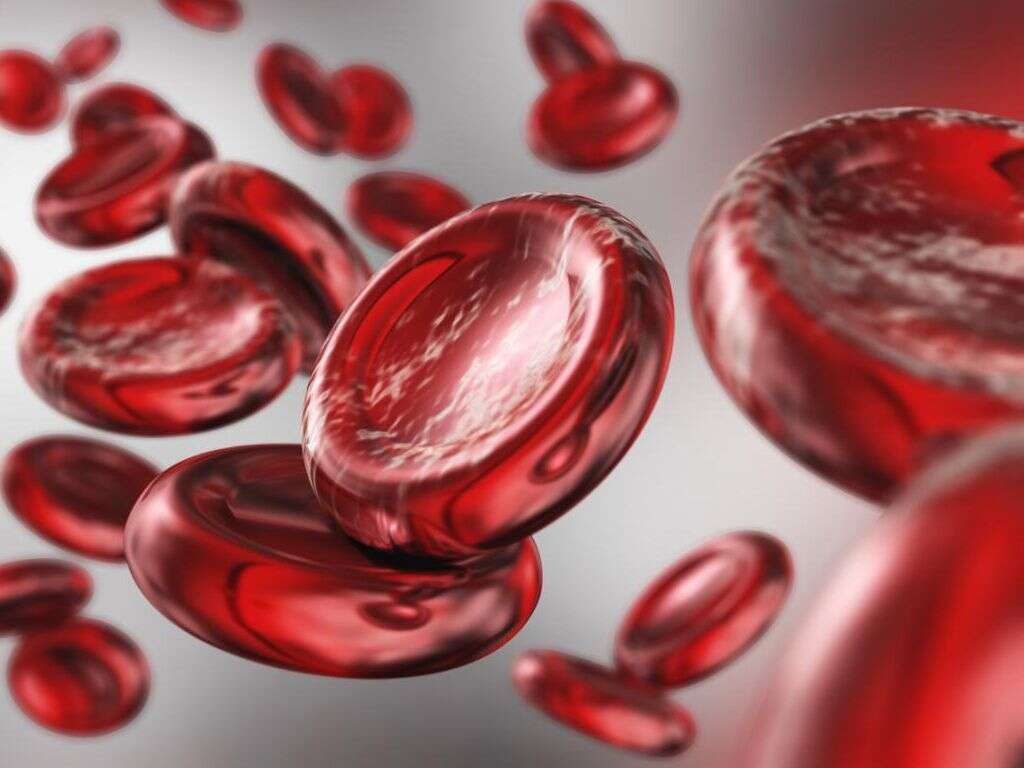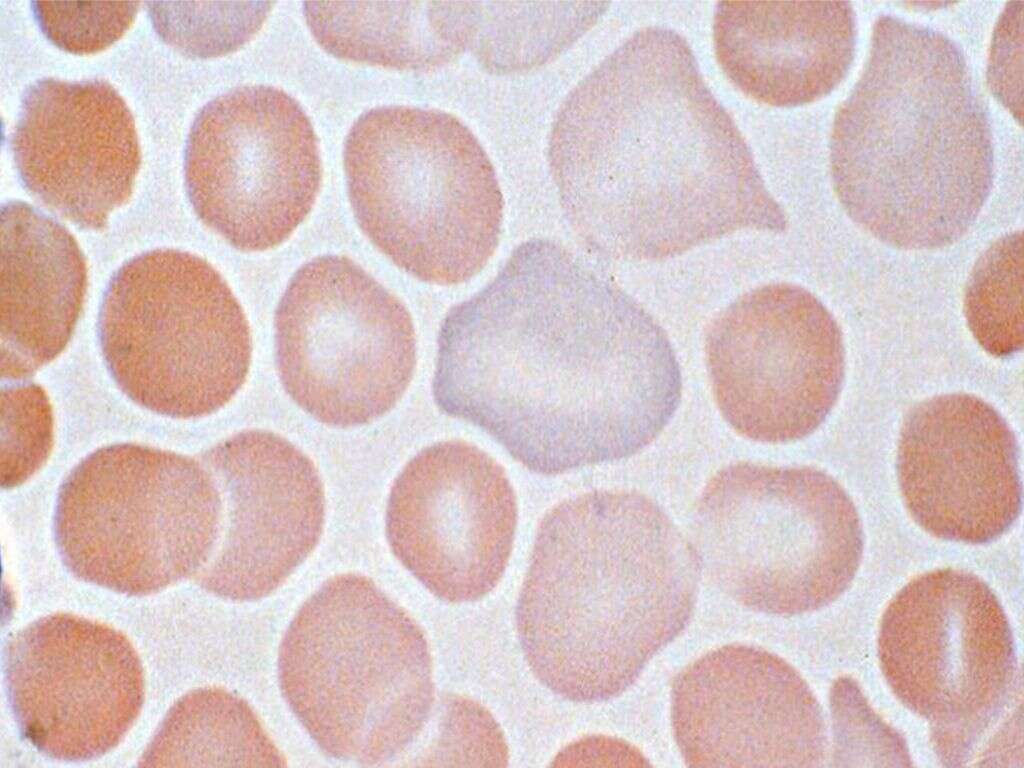10 Pernicious Anemia Symptoms
Pernicious anemia is an autoimmune condition where the body is unable to make enough intrinsic factor (IF), resulting in inadequate absorption of vitamin B12, which causes anemia. Intrinsic factor is a protein produced in the stomach that plays an important role in vitamin B12 absorption. Vitamin B12 plays an important role in the production of red blood cells, therefore, if a person is not properly absorbing vitamin B12, it may cause their red blood cells to become bigger than usual and eventually break. Vitamin B12 is also involved in the proper functioning of the nerves, therefore, if a person is unable to absorb it, it may cause neurologic complications as well.
This condition affects less than 1% of the population, but it is more common in the elderly (above 60 years of age). People of Celtic and/or Scandinavian origin are more commonly affected by this disease as well.1Rodriguez, N. (2020, June 24). Pernicious Anemia. https://www.ncbi.nlm.nih.gov/books/NBK540989/

1. Weight Loss
Losing weight unintendedly is something that might sound good for some people but it is certainly something that requires checking. Losing large amounts of weight over a short period is something that is not usual and could be a sign that something is wrong.
Patients with pernicious anemia usually experience weight loss. Up to 50% of patients will lose 10 pounds or more. Weight loss might be associated with the reduced appetite commonly seen in patients with this condition. If you are experiencing sudden and unintended weight loss, you should seek medical attention to find out the exact cause.

2. Fever
A fever is an increase in body temperature. Usually, the temperature should be above 38⁰C (100.4⁰F) in order to be considered as a fever, but this depends on the site where the temperature is being measured. A fever is usually a response of the body to a threat. By increasing the body’s thermostat set point, we start to shiver to generate heat in order to reach the new temperature that has been set.
A low-grade fever might be one of the early symptoms associated with pernicious anemia. It is seen in almost a third of patients suffering from this condition. Luckily, the fever goes away as soon as the treatment starts.

3. Nausea
Nausea is commonly defined as the urge to vomit. It can appear suddenly but in some cases, it has an insidious onset. It is a non-specific symptom that can be associated with many conditions, but it can also be triggered by certain events or things in our surroundings.
The gastrointestinal tract can be affected by this condition as well. Nausea, vomiting, and flatulence are not uncommon among patients struggling with pernicious anemia. Due to the unspecific nature of these symptoms, they often go under the radar and are not usually helpful from a diagnostic point of view.

4. Smooth Tongue
The tongue is a muscular organ that is involved in the swallowing of food and it is also a crucial component of our gustatory system. A well-hydrated tongue might seem smooth, but in reality, our tongues are covered in taste buds that aid in the process of tasting food.
Up to half of patients dealing with pernicious anemia will experience smoothing of their tongues. This is a classic sign associated with this condition and it is quite helpful as a diagnostic tool. Some patients may also complain of tongue soreness as well.

5. Altered Sensation
Paresthesia is the medical term used to describe an altered sensation on a part of the body that usually manifests as tingling, numbness, or burning without an apparent reason. It can be caused by applying an abnormal pressure to a nerve, which causes the transient feeling of numbness that we experience after crossing our legs for too long or falling asleep on top of our hands. It can also manifest as “pins and needles” sensation that can be a sign of nerve damage.
Vitamin B12 is crucial for keeping our nervous system working properly. Neurological symptoms are quite common among patients with pernicious anemia. The classic triad of this disease is characterized by paresthesia, muscle weakness, and tongue soreness. As the nerves start to lose their myelin sheet due to lack of vitamin B12, the neurological signs start to appear as well.

6. Muscle Weakness
Lack of muscle strength is not necessarily a bad thing; it can be quite normal after an intense workout routine. On the other hand, if you find yourself having problems voluntarily move a muscle without being tired from exercise, this is something that requires medical assessment.
Muscle weakness is another classic symptom associated with pernicious anemia. Vitamin B12 deficiency is going to cause neurological symptoms like muscle weakness, altered sensation, and gait disturbances to appear. If you are experiencing this symptom you should seek medical attention to find out the exact cause.

7. Memory Loss
Memory loss is also known as amnesia. It can be described as having problems remembering events, dates, names, or even people. There are two main types of memory loss. Anterograde amnesia is when an individual has problems making new memories, as seen in patients after major head trauma. On the other hand, retrograde amnesia is when a person struggles to remember past events.
Older patients struggling with pernicious anemia may develop signs of dementia. Irritability and memory loss are common findings among these patients. It is important to rule out more common conditions like Alzheimer’s disease and senile dementia before jumping to any conclusions. Some patients might even experience hallucinations and drastic personality changes as well, but these symptoms are less common.

8. Fatigue
Fatigue can be described as a general feeling of exhaustion. Usually, this symptom improves with adequate rest, but depending on the source of the problem, it may not improve at all. It can be triggered by exercise, stress, and work-related activities. It is a non-specific symptom that can be associated with many conditions like anemia and anxiety, to name a few.
Vitamin B12 is a crucial part of the process of making red blood cells. Without it, the red blood cells end-up being too large and eventually brake causing anemia to appear. One of the most common symptoms associated with anemia is fatigue.

9. Increased Heartrate
Tachycardia is the medical term that describes a rapid heartbeat. It is medically defined as a heart rate that goes above 100 beats per minute. Depending on the situation, an increased heart rate can be perfectly normal. Exercise and extremely stressful situations will cause the heart rate to increase and it is a perfectly normal response to these events. On the other hand, conditions like anxiety and cardiac arrhythmias may also cause a person to experience tachycardia.
The red blood cells are in charge of transporting oxygen to the tissues. If the red blood cell count drops, the heart will start to pump blood faster to make sure that the oxygen is delivered. This is a compensation mechanism to the anemia that patients with this condition experience, therefore, tachycardia will often appear late in the disease process.

10. Pale Skin
A pale complexion is something that can be easy to spot on someone that is ill. The lighter tone of the skin compared to the usual complexion of a person might be a sign that something could be wrong. The skin is the largest organ in the human body and correspondingly, it demands an important amount of blood to nourish it. If the blood flow to the skin is compromised or if the oxygen content in the blood drops, the skin might become pale.
Anemic patients will often be pale compared to their usual complexion. People suffering from pernicious anemia might also look somewhat yellowish like wax. As the disease progresses and the anemia appears, other symptoms like fatigue, tachycardia, and breathlessness could show up as well.











